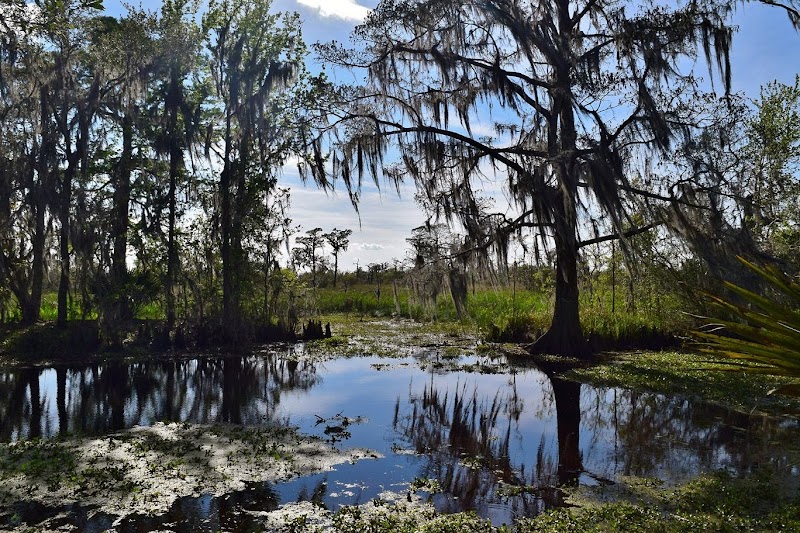
Hooked on the Tangipahoa: Annual Fishing Tournament Thrills the River
Every spring, the Tangipahoa River in Louisiana challenges anglers in an Annual Fishing Tournament that blends fierce competition with rich local culture. Whether a novice or seasoned angler, this event offers a practical yet thrilling outdoor experience along a river alive with fish and history.
Prepare for Variable River Currents
The Tangipahoa River can shift rapidly with rain or dry spells. Plan your fishing spot and boat handling accordingly to stay safe and effective.
Use Line Resistant to Snags
The river’s submerged branches and thick vegetation make tangle-resistant fishing line a must to avoid lost tackle and frustration.
Hydrate and Protect from Heat
Spring can bring sudden heat spikes; bring plenty of water, sunscreen, and a hat to prevent dehydration during the tournament.
Scout Early Morning Spots
Fish are most active just after dawn; arrive early to select strategic spots and maximize your catch opportunities.
Hooked on the Tangipahoa: Annual Fishing Tournament Thrills the River
Every spring, the Tangipahoa River wakes with purpose and promise as anglers gather for the Annual Fishing Tournament in Tangipahoa, Louisiana. This fiercely alive stretch of water, running through the heart of Tangipahoa Parish, dares fishermen and women to test their skills against its twisting currents and well-guarded fish populations. The river’s ripples conceal largemouth bass, crappie, and catfish, each species a prize shaped by the river’s unpredictable moods.
The tournament is as much a social scene as a challenge—boats fuel engines alongside buzzing banks where seasoned competitors and casual participants trade tactics and stories under a thick canopy of cypress and magnolia trees. The river’s banks, lined with thick brush and winding tributaries, require careful navigation, especially for newcomers. Contestants usually cover a workable float distance of roughly 10 to 15 miles, following a course that threads through forested corridors and open waters.
Preparing for the tournament means understanding both the environment and the demands it places on you. The Tangipahoa isn’t a gentle guide; it pushes fishermen to respect its flow and to be ready for sudden changes in weather. Early morning is prime time—the rising sun softens the heat, and fish become more active in cooler water. Hydration is non-negotiable, and footwear must offer firm grip for wet boat decks and riverbanks.
Equipment varies, but versatile gear that can handle the tangles of woody debris is critical. Anglers monitoring line tension will find this stretch challenges even experienced hands. The tournament fosters equal parts camaraderie and fierce competition, with local vendors bringing a slice of Louisiana culture to the event —think bold Cajun spices and the soundtrack of blues guitar weaving through the air.
Beyond the tournament, the river’s surrounding trails invite exploration. A short hike near the banks reveals quiet springs and vibrant birdlife, rewarding patience with sightings of herons and kingfishers darting across the water’s skin. This event captures the practical thrill of the outdoors—a chance to engage skill, endurance, and the unpredictable river itself. The Annual Fishing Tournament on the Tangipahoa urges you to come prepared, stay alert, and respect the water’s own fiercely guarded secrets.
Nearby Trips
All Adventures
Boat Charters
Water Activities
Adventures near Tangipahoa, Louisiana
Discover the unique and memorable adventures that make Tangipahoa, Louisiana special.
Frequently Asked Questions
What types of fish are targeted in the Tangipahoa River tournament?
Main catches include largemouth bass, crappie, catfish, and occasional speckled trout. The river’s ecosystem supports these species well, making them favorites for the competition.
Are there any hidden fishing spots on the Tangipahoa River?
Yes, some less-fished tributary bends near the town of Tangipahoa offer quieter waters and rich fish habitats, ideal for anglers who scout early or arrive well-prepared.
Can beginners participate in the tournament?
Absolutely. The event welcomes all skill levels but recommends newcomers partner with experienced anglers or guides to navigate river currents and regulations safely.
What environmental practices are encouraged during the tournament?
Catch-and-release is strongly promoted, especially for smaller fish. The tournament emphasizes minimizing litter and respecting riverbank vegetation to protect the fragile river ecosystem.
Is camping available near the tournament site?
Local campgrounds and parks near Hammond provide camping options, often within a 20-minute drive from the river. Advanced booking is recommended during tournament season.
What is the historical significance of the Tangipahoa River in the region?
The river has long been vital to local Native American tribes and settlers. It shaped transportation and trade routes, and today it still holds cultural importance in community events including this tournament.
Recommended Gear
Tangle-Resistant Fishing Line
Prevents frequent snags on submerged branches common in the river.
Waterproof Boots or Boat Shoes
Gives firm footing on wet surfaces, reducing slips and improving mobility.
Hydration Pack
Ensures adequate fluid intake across long tournament hours under sun exposure.
Lightweight Sun-Protective Clothing
Helps shield skin without overheating during bright, warm mornings.
Local Insights
Hidden Gems
- "A quiet loop trail near the river’s eastern bend reveals secluded springs and old-growth hardwoods."
- "A small island mid-river offers a peaceful rest spot rarely visited except during the tournament."
Wildlife
- "Louisiana herons and kingfishers are regularly spotted darting over the water."
- "Otters occasionally surface, adding an unpredictable delight to the fishing experience."
History
"The Tangipahoa River was a natural passage for Choctaw tribes and later became a key waterway for logging and trade, shaping the local culture and economy through centuries."
